Giant sea fans are common and conspicuous in tropical seas, and a favourite with underwater photographers who often pose their buddy behind one.
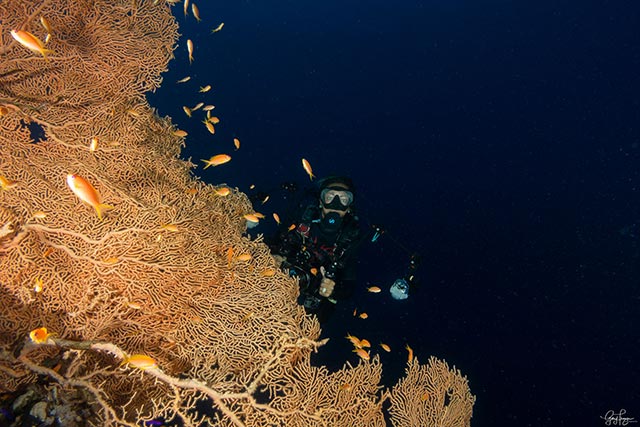
Diver behind giant sea fan. Photo credit: Garry Frazer.
They are gorgonian corals. Growing at right angles to the prevaling current, their tentacles strain microscopic particles of food from the water.
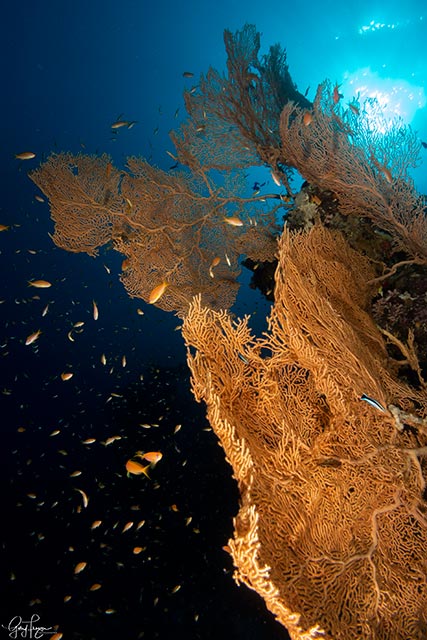
The design of gorgonian corals requires a small amount of surface area for attachment, but provides a large surface area for feeding. Gorgonians must avoid being damaged by currents but, at the same time, must remain erect in order to feed effectively. These two requirements have produced a compromise between rigidity and flexibility, with colonies typically having the elasticity of stiff rubber. When currents threaten to damage a colony, they can bend and then spring back into their original position. The giant sea fans reach their maxium size in 10 to 15 years.
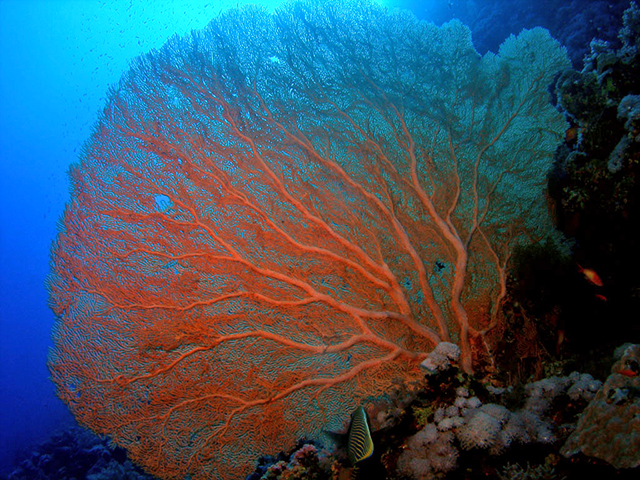
Giant Sea fan. Photo credit: Tim Nicholson.
A colony? Yes, sea fans are actually colonies of many small individual polyps connected together to form a lacey sheet.
Gorgonians habour many animals including gobies, snails, bivalves, seahorses and the shy longnosed hawkfish. Below the hawkfish is well camouflaged against the sea fan.
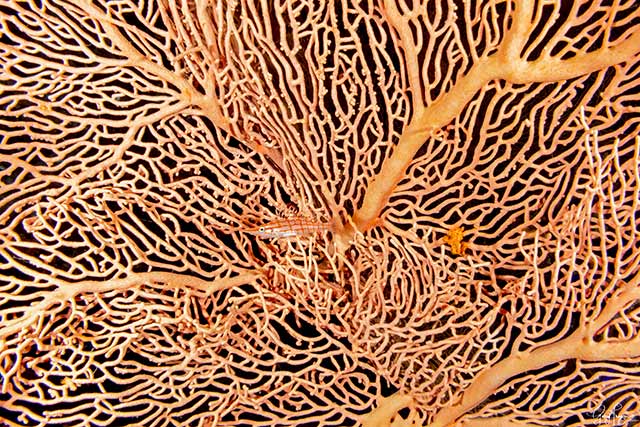
Longnose hawkfish in sea fan. Photo credit: Garry Frazer.
The fans are unpalatable to fish, with chemical defenses concentrated at their tips
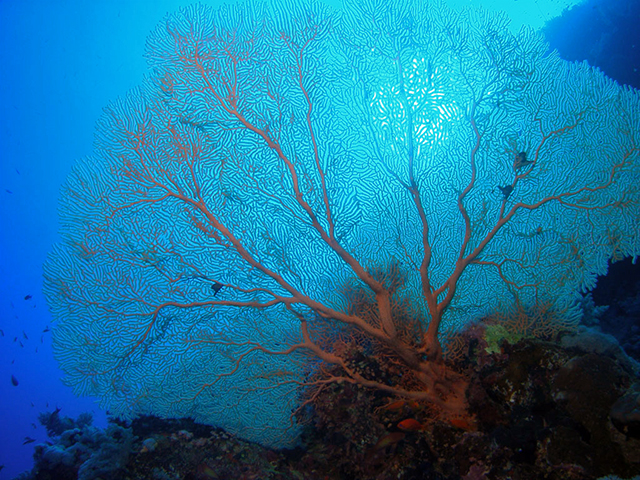
Sea fan. Photo credit: Tim Nicholson.
Giant sea fans live at depths from 10 to at 60 m. They grow to 2 m wide.
Cnidaria > Anthozoa > Octocorallia > Alcyonacea > Subergorgiidae > Annella > Annella mollis
Further Reading and References
Invertebrate Zoology, by Robert D Barnes, Brooks Cole, 2003 ISBN 0-0302-6668-8
Puglisi-Weening et al. (2000). Biogeographic comparisons of chemical and structural defenses of the Pacific gorgonians Annella mollis and A. reticulata. Marine Ecology-progress Series – MAR ECOL-PROGR SER. 207. 263-272. 10.3354/meps207263.
Image credits:
- Sea fan: Garry Frazer
